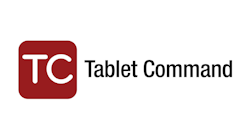In the simplest sense, incident command is the individual who oversees what’s going on, be it a straightforward run or the most complex of calls. In more complicated terms, it’s the individual who must have a strategic plan, which evolves constantly. It’s the individual who must be hyperaware situationally. It’s the ultimate decision-maker who, in the end, is responsible for everyone who is on scene and even possibly those who are in supplementary positions not on scene.
In 2004, when the Incident Command System (ICS) became the cornerstone of the National Incident Management System (NIMS), a structure was put in place to help to control every situation, using similar methods and terminology for all who are involved. Today, being the incident commander (IC), although possibly more involved than in the past, can be managed more easily than previously using tools and technology to help to keep a grasp on everything that surrounds an incident.
Managing the incident with software
Most fire apparatus have some sort of mobile data terminal (MDT). If they don’t, personnel use other technology that’s either accessed via their phone or an iPad. Because of this, ease-of-use goes hand in hand with incident command technology.
Tablet Command is an example of tech that helps ICs to manage numerous aspects of incident command. The software gives multiple perspectives into the incident, helps to manage resources and has the capability to replace the MDT without losing any of the functionality.
From the minute that the tones drop—possibly even before they drop—because of a direct integration, a notification is sent to devices to help ICs begin to collect all of their resources as well as start to formulate the initial attack plan, starting with directions to the address of the incident to possible hazards that are around the incident. If a commercial building is involved, there’s the possibility of including preplan information, too. The software can give tactical bird’s-eye views of surrounding areas.
Tablet Command provides the capability to share apparatus location via automatic vehicle location technology. Furthermore, because Tablet Command integrates directly at the CAD level, departments that share a CAD or dispatch system can use the software without constant change. They also can share their apparatus locations, which makes mutual aid decisions—as well as planning for large-scale events—easier. On the fireground, the software allows the IC to position apparatus and units on a map as well as to set up divisions and groups.
As a call progresses, a constant timer reminds the IC of checkpoints throughout the life cycle of the incident. This helps the IC to buy time. Furthermore, the application evolves and continues to track crucial information that’s related to the incident.
Upon completion of the call, an activity record can be exported. The software can integrate with other third-party solutions for staffing, station displays and mapping data.
By helping to account for all of these things for the IC, the software ultimately makes the scene safer for all of the personnel who are involved. It standardizes process and makes communications more effective and efficient.
An SCBA assist
MSA’s development of the G1 SCBA was the foundation for a platform that can feed information to the company’s FireGrid suite of applications, to better allow ICs to make intelligent decisions.
The G1 has the capabilty to read an RFID card to uniquely identify each SCBA, be it with a firefighter’s name or the position of that individual on the apparatus.
A more recent addition is the LUNAR device. It takes information from the G1 and passes it to the FireGrid platform. It even can operate standalone, which negates the need to own an MSA SCBA.
Via its capability to act as a thermal imaging camera, the LUNAR device not only helps to identify issues, but it also keeps teams in touch where they normally might not be able to do so. This results from the way that the device creates its own mesh networks, and that’s based on the way that the devices are configured.
Once the incident is over, all of the telemetry data are uploaded to FireGrid, so the IC can report on the incident more easily and use the analytics to forecast potential training needs. For example, are the members of the crew of one engine always running lower on air before those of another are? Does one truck company make search patterns in different ways than other truck companies?
In a LUNAR rollout video that was produced by MSA, Henry Hennings, who is the fire chief of the Easton, PA, Fire Department, said, “Having the LUNAR devices and the G1s paired together will give us better overall safety on the fireground, which will better help us protect our citizens.”
IC Training
Continual training goes a long way to ensuring that ICs are prepared for any type of incident. Even working for a larger department, which can see a significant number of incidents, doesn’t remove the need for training.
Furthermore, we all are aware of the risk matrix and the fact that each department has a high-risk/low-frequency category that could come up and bite it at any time, particularly if the department isn’t prepared as well as possible.
By utilizing various up-to-date training methods, the Blue Card Incident Command Certification helps ICs to understand the eight functions of command (deployment, assumption/confirmation/positioning, situation evaluation, strategy and incident action planning, communications, organization, review/evaluation/revision and continue/support/terminate command. By utilizing National Institute for Occupational Safety and Health reports and subject matter experts, Blue Card blends traditional learning, online learning and more than 50 simulations that cover apartment fires, big-box occupancies, commercial fires, residential fires, strip mall fires and some not-so-common EMS scenarios that often trip up ICs. These scenarios are true to life and use fire simulation technology.
Being a great IC isn’t always about just managing the scene. It’s about building on one’s knowledge, coupled with the knowledge of others. Blue Card not only trains on the eight critical fireground factors (building, fire, occupancy, life hazard, arrangement, resources, action and special circumstances) but equips with tried-and-true methodologies, in an attempt to mitigate hazards and to keep personnel safe. In a case when an IC comes upon that unicorn call, with Blue Card, that person has a foundation of how to deal with what’s occurring.
Train crashes
One incident that probably all of us hope that we never must manage because of the sheer size of the network of railroads is a train derailment or crash.
The AskRail app, which was created by the Association of American Railroads, tracks tens of millions of waybills per year, which can give an IC extensive knowledge of a train, its contents, its total number of cars and other information.
By providing a car’s equipment ID (the numbers that are on the side of a rail car), the app returns the number of cars in a train, whether the cars are loaded or empty and whether they contain hazardous materials. By having the entire consist of the train, ICs can identify the car that’s directly in front of them as well as one that’s a mile down the tracks.
In regard to hazardous materials, the app provides the contact information for the materials as well as a direct link to the Emergency Response Guidebook information that’s associated with them.
Recently added to the app are the exact mileposts that are associated with the rails, which helps to more easily identify where the possible hazard and incident is for all who are involved.
Numbers are everywhere
As an IC, decision-making is about having the right data at the right time. With that, you can make calculated decisions, based on what you see and what you know. These decisions help the incident run more smoothly and help members to do their job more safely, effectively and efficiently.








